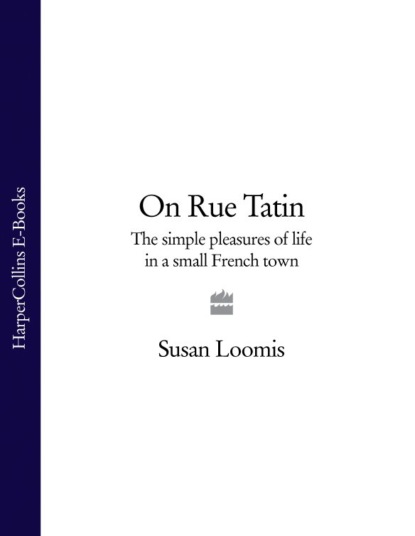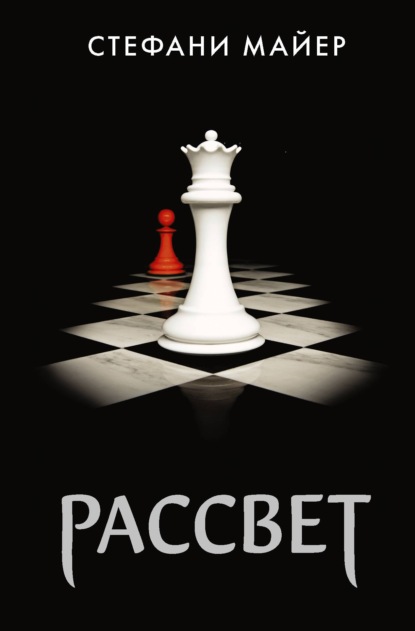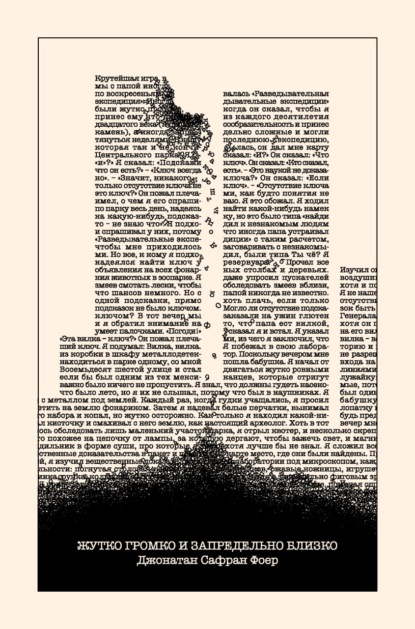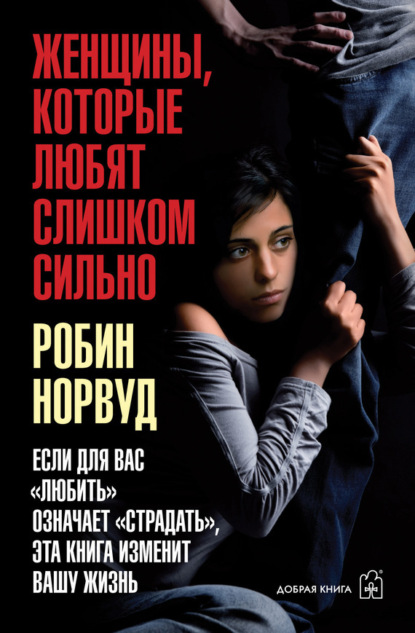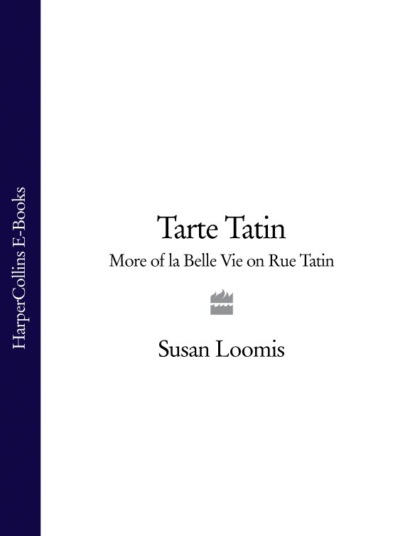
Текст
отзывы: 0 | рейтинг: 0
Tarte Tatin: More of La Belle Vie on Rue Tatin
Жанр:
Дом. семья. хобби
Язык:
Английский
Тип:
Текст
Год издания:
2019
Полная версия
Полная версия
Tarte Tatin: More of La Belle Vie on Rue Tatin
Susan Loomis
Further adventures on life in a small French town from Susan Loomis, cookery book writer and author of ‘On Rue Tatin’.‘On Rue Tatin’ was a delightful discovery, and every reader asked for more. The life on Rue Tatin seemed like a dream fulfilled.Now in ‘Tarte Tatin’, Susan Loomis shares with us how she, her husband and two children settled into life in a small French town, learnt about their neighbours and how to be accepted as inhabitants of the town. With her son going to a French school and her husband finding work in the town, Susan Loomis discovers the joys of the French lifestyle – the markets and the food in particular – but also some of the difficulties, particularly for those who are not born French.The creation of the long dreamt-of cookery school is a story of great appeal – everyone who has ever thought of starting their own small business will enjoy the ups and downs of their enterprise, and long to go to Rue Tatin.
TARTE TATIN
More of La Belle Vie on rue Tatin
SUSAN LOOMIS
DEDICATION (#u72d06d9d-ffdd-5486-bfff-1ace8eec78d1)
I dedicate this book to our children Joseph and Fiona, whose love, humour, and energy suffuse life with a very special richness. I also dedicate this book to the memory of André Taverne whose jokes and ready smile are missed, to his wife, Marie-Odile, and to his sister-in-law Marie-Claire, for their friendship.
CONTENTS
Cover (#u1e8ba898-923f-56dc-b39c-fddce1164d8a)
Title Page (#ube9b9520-04cf-5727-a119-f8386bee0a60)
Dedication (#ucd933086-ae63-5e0f-85a2-58f334788055)
The Opening up of On Rue Tatin (#u3c4f6f00-95b7-5c79-bd7f-6adf4a0c9bc8)
The Kitchen and the Cooking School (#u2cca79f8-9414-5934-b5a1-abcfba37167e)
A French Poodle in the House (#u25d2735f-856c-5996-a267-0850756b4d57)
An Ode to the Market in Louviers (#ue8b24f52-4b3a-569f-9057-a5e79f642002)
The Florists (#u7141daa0-40d3-5164-9a32-a9999d34ec37)
Be Careful of Me, I’m Dangerous (#u27a68115-2eae-5ae1-8869-262bc3b282ba)
The Place for a Party (#u545ada8f-e00c-5fd0-bccd-9c5d0e685e19)
There’s an ‘Ado’ in Our Midst (#udce30b6c-cb17-5e95-b81b-120e7926ef43)
Driving À La Française (#ub238b6f3-96a2-5bd5-a3bc-213ce936a279)
Paris (#ua66fe9f4-d400-5909-bea2-b097332fb2dd)
While Louviers Sleeps (#u1fde3012-fc56-5d9d-b93f-a990282b2873)
Shopping and the Cart (#u0cae57bd-dc84-5703-8ccf-d837fe1ba55c)
Michael’s Studio and the Gentrification of Louviers (#u8b25f765-11ab-577c-b26e-dad176982984)
Bi-Culturalism and Play Ball! (#u9876e7d5-dfd2-5beb-bef6-00a5e91907a9)
Cultural Differences/Cultural Sameness (#u4196a961-3f24-5900-a853-677fb55ce28e)
Home Away from Home – September 11 (#u4e6f8347-e1c8-5aaf-b9fa-cee5bfd68c7e)
Afterword (#u047c94e4-e97d-5ed7-8352-f67391f21654)
Keep Reading (#ufb90402b-0f53-5ce4-9c50-1fd6a388d5ae)
List of Recipes (#u3a87ff50-3186-5711-8f92-8333365bbdc5)
Acknowledgments (#u9e957328-0fe1-5d13-9fe0-bab182b2d25d)
About the Author (#u31228bc7-666c-57f9-8875-18b4aa186197)
Copyright (#u24f97a3c-5dfc-5b6a-9b62-24873354b24d)
About the Publisher (#u5c7e6560-27ce-5e14-a772-f3e10d398315)
The Opening up of On Rue Tatin (#ulink_d448da1b-6595-5c23-a1ba-447fcc0f321f)
It had been five years since we’d moved to rue Tatin in Louviers, northwest of Paris. The house was habitable, though hearty draughts still tugged at the curtains, and attic rooms remained as they were when we bought the place: dry but in sad repair. We used them to store things, like the dozen or more beautiful antique doors that were in the house when we acquired it, building materials and electrical supplies, as well as the general flotsam and jetsam that collectors such as Michael and I accumulate.
We had pretty much adjusted to the schedule of Joe’s school, accepting that – just as we’d feel we were getting into our individual rhythms – it seemed to be time for another vacation. Professional demands dictated that we rarely went on holiday, so we would divide our days in two. Michael would generally be with Joe in the morning while I worked, and I would take Joe in the afternoon while Michael worked. Joe would have friends over now and then, but the French don’t share their children in the way Americans do, so it was less often than either we or Joe liked. We had put Joe in a local school, thinking he’d make friends in the neighbourhood but, as luck would have it, most of his friends lived in other towns, and the few boys his age who lived locally were kept hidden somewhere; we’d see them only on their way to school.
Michael and I were settling in with a close group of friends that included Edith and Bernard, Christian and Nadine, Babette and Jean Lou, Chantal and Michel, our neighbour Patrick and Anne-Marie and Patrick. We’d even met two Franco-American families who lived in towns nearby, which provided us with some comic relief when we got together and shared evenings, laughing at each other’s jokes because – for a change – we understood them. We had friends in Paris, too, which occasioned going there regularly for dinner, driving back in the wee hours when the roads were empty. I always say it takes an hour to get to Louviers from Paris, but at 1 a.m. it’s an easy forty-five minute trip.
We were, all in all, beginning to understand how things worked in France, and to feel comfortable as the only American family in Louviers. Louviers, and France, were beginning to feel like home.
My French Farmhouse Cookbook had been published, and I was currently involved in developing and testing recipes for an important American cookbook that was a collaborative effort by many of my colleagues. I was also doing research and testing for the Italian Farmhouse Cookbook, which for two years took me to Italy for long periods of time. I loved doing both projects, particularly the Italian book, since it gave me an insight into a country, people and culture with which I was unfamiliar. I wanted it to be my last farm book, as I felt I’d said what I could say about farming, and I knew that just writing books would no longer be enough to support our family. I began thinking about what would be next. I wouldn’t stop writing books, because it is something I am made to do. But I wanted to use our home for a business, and the business I’d always imagined operating was a cooking school. Way back when we had lived in Seattle I’d wanted to do the same sort of thing, but the situation there hadn’t been right. This time, it just might be.
My inspiration to open up our home came initially from the time Michael lived on a farm in the Dordogne with the Dubois family – nearly twenty years ago. Danie Dubois, in an effort to augment her income and give herself an interest outside their isolated little village, decided she would take in paying guests for meals and the night, and would offer ‘cooking weekends’ using local specialties as ingredients. By the time Michael went to live with them, Danie’s business was prospering. She not only made endless meals to satisfy her guests, but she also offered pig and foie gras weekends.
For her ‘weekend de cochon’, she and her guests turned an entire pig into delectable pepper- and salt-cured hams, rillettes, blood sausage, head cheese, roasts, chops and more. For the ‘weekend d’oie’ she transformed geese into untold marvels like confit, stuffed gooseneck, foie gras en terrine and a wonderful local delicacy called ‘demoiselles’: goose carcasses grilled on a wood fire. Everything Danie made was sumptuous: her foie gras was so delicate and buttery that it made any other of little interest; her confit was beguilingly crisp on the outside and mouth-melting inside. The confit went so well with her creamy pumpkin soup, the wonderful dandelion salads, made from leaves picked in the field next door and dressed with her own walnut oil, the crisp country breads, her homemade cheese, the grapey wine her husband Guy made from their own grapes … Danie would grill country bread over the fireplace coals and spread it with fresh foie gras. She served this as an aperitif, and what an aperitif it was.
Everything Danie did was first-rate, and every dish she made was better than the one before it. Because of this, her enterprise was enormously successful, her table so sought after that she eventually expanded her dining room and turned it into a restaurant, which is still thriving today.
Michael and I loved the ambience that Danie’s business gave to the farm; the flow of appreciative guests from around the world; the sharing of traditions; the way the house and their life encompassed everyone; the seamlessness of it all. I’d always wanted to create that at our own home, and I realized that we had the potential on rue Tatin. We wouldn’t house people – the house isn’t large enough – nor would we grow all our own food. We didn’t need to – local farmers would do that for us.
We had one problem, however, and that was the kitchen. It was far from suitable for a cooking school in its present state. We’d planned to build a new one, but Michael was still embroiled in the dining room. When we sat down to discuss the idea of the cooking school we realized that it would be at least two years before we could consider bringing the idea to fruition. How, we wondered aloud, could we make the house work for us now?
With our friends Pat and Walter Wells, who were over for lunch one day, we came up with the idea of offering lunches to paying guests, tourists who would like a moment of delicious luxury and an opportunity to get a more intimate view of French culture. We all decided, looking around at the dining room and the view out of the window, that it didn’t matter that the house was half finished, or that our ‘forever’ kitchen wasn’t yet built. All I needed for this idea was a kitchen where I could cook fabulous food. ‘This house, this room, this whole place is gorgeous; people will love it as it is,’ Pat said, and Walter concurred.
Once the idea had been articulated, I began to get excited. It could be so perfect. I could easily imagine greeting small groups of friendly Americans with meals made from the best of local and mostly organic ingredients, and delicious wines. I could imagine us discoursing on the local community, agriculture, the state of the European Union, and we could answer their questions about life in France. One of my favourite parts of this plan was that we could justify buying beautiful dishes and glassware (which I love) to make lunches the luxurious experience I imagined.
I was scheduled to go on a book-tour in the United States not long after our lunch with the Wellses. I decided to take a stab at marketing the lunches as I went, and to that end brought it up during every interview. I enlisted a friend in the US, Marion Pruitt, to be the contact person, knowing that she was so organized she wouldn’t let one detail fall through the cracks, and that people who called would love her. She’d been to visit, too, so she could speak knowledgeably about us and about our location. Before I knew it, a group of five women had signed up as paying guests.
When I returned from my book-tour I looked at the house with fresh eyes, and I wondered if I’d been crazy to think we could have strangers here. The setting and the bones of the house were gorgeous, no doubt about it, but would people mind the stacks of crooked old timbers and stones? Would they be as charmed by the unfinished dining room as we were? Would they think the sheet rock wall in the kitchen that Joe used as an easel as cute and practical as we did? ‘We’ll see,’ I thought. Then I began to plan the menu.
The group would come in October, one of my favourite times of year. How to decide what to serve? I put myself in the shoes of the person thinking of Norman cuisine: what would they want to eat? Apples, of course. Duck, for there is nothing like it to whisper ‘Normandy’ on the palate. Shellfish, cream, wonderful cheese.
Whenever people come to eat I want to offer them all the good and wonderful things we have available to us, but of course in one meal I can’t. So I use the aperitif to offer a multitude of small tastes and flavours that will give a hint of the meal to come, and of the wealth the region offers, as well as a sense of what is typical. I decided that, in this instance, oysters from the cold waters of the Normandy coast were a must. I personally love them plain: just well chilled and without sauces or condiments. As a compromise, to cater to tastes that might not be so pure, I would serve lemon wedges and a sauce mignonette alongside.
Anyone who has ever dined in a French home knows how vital pistachio nuts are to the aperitif hour. I have a source for slender, dark pistachios from Turkey, the kind my father used to bring back from there by the laundry bag full when I was a child. I developed a passion for their crisp, rich nuttiness then, and I still love watching others taste them for the first time. Their eyes widen and pretty soon they are back for more, for these pistachios are so much more flavourful than any other. So, duck, oysters, pistachios. The menu needed work.
I make a sweet, salty olive cookie from an old Provençal recipe, and I added that to the aperitif – no one can resist them. Now, I needed a crisp vegetable to round out the selection, and I decided it would be sticks of fresh fennel. It is the only vegetable aside from celery with a natural saltiness, and it is round, fat and crisp in October. I would serve my homemade orange wine, too: its intense, caramel-orange flavour beguiles everyone who tastes it.
I decided on confit tomatoes for the first course, since Normandy tomatoes are rich and sweet in early October. To make these, I cut them in half and bake them long and slowly in olive oil with rosemary, thyme, thinly sliced shallots, whole cloves of garlic and sea salt. When they emerge from the oven they taste and smell like concentrated sun. With the roast duck I would serve autumn turnips glazed with cane sugar. Just thinking about it made me hungry.
Salad would come from the garden – arugula and baby beet greens, sorrel and snipped sage leaves. I settled on a trio of Normandy cheeses – Livarot, Camembert and Neufchâtel. I would carefully caramelize apples for a tarte tatin. After all, we live on rue Tatin – how could I plan a meal without it?
As good fortune would have it, a visit from my parents would coincide with our first lunch. Friendly, warm and well-travelled, they are the perfect lunch companions any time. For our first lunch they would be our trump card, carrying the conversation while Michael and I attended to the details.
This lunch would resemble a theatre performance as we hid the worst of the remodelling messes and created a captivating, luxurious ambience. We began cleaning up the dining room, garden and courtyard three days before our guests were due to arrive. Michael moved and stacked materials; we both worked furiously to get the garden cleaned up. I bought and planted flowers and we trimmed and tidied the window boxes. The exterior had looked pretty good before we started. By the time we were finished it looked magical. As for the interior, we cleaned, polished and dusted, and I put bouquets of flowers everywhere. We didn’t have an official bathroom downstairs, but a toilet hidden behind a wall. I hung a pretty curtain over the door and hoped for the best.
Finally, it was market day before the big lunch. Accompanied by my parents and Joe, I went to buy all the ingredients, loading myself down with the best butter and milk, the finest tomatoes and oysters, gorgeous little turnips and even some late-season raspberries that smelt like heaven. I wasn’t sure where they would fit in, but how could I resist?
I went home and began to prepare the meal, then was up at 6 a.m. the following morning to continue cooking. With my mother’s help I covered the table with an antique monogrammed white linen sheet, then curled a strand of ivy down the centre. Michael almost killed me when he saw the ivy; he had been at great pains to make our one ivy plant climb up a small section of brick wall near the ancient wooden door in our courtyard, and I had just trimmed off the longest pieces. He needn’t have worried, however, as the ivy on the brick still looked good. I knew his reaction resulted from being as nervous as I about this first lunch.
I printed up menus on parchment paper and set one at each place, along with sprigs of bay leaves, which guests could take home with them, silver cutlery, our amber and turquoise water glasses from Portugal, crystal wine glasses. I had recently found a stack of blue and white vintage Sarreguemines plates tucked away in a local brocante, second-hand market, and with these on the table it looked fit for royalty.
Susan Loomis
Further adventures on life in a small French town from Susan Loomis, cookery book writer and author of ‘On Rue Tatin’.‘On Rue Tatin’ was a delightful discovery, and every reader asked for more. The life on Rue Tatin seemed like a dream fulfilled.Now in ‘Tarte Tatin’, Susan Loomis shares with us how she, her husband and two children settled into life in a small French town, learnt about their neighbours and how to be accepted as inhabitants of the town. With her son going to a French school and her husband finding work in the town, Susan Loomis discovers the joys of the French lifestyle – the markets and the food in particular – but also some of the difficulties, particularly for those who are not born French.The creation of the long dreamt-of cookery school is a story of great appeal – everyone who has ever thought of starting their own small business will enjoy the ups and downs of their enterprise, and long to go to Rue Tatin.
TARTE TATIN
More of La Belle Vie on rue Tatin
SUSAN LOOMIS
DEDICATION (#u72d06d9d-ffdd-5486-bfff-1ace8eec78d1)
I dedicate this book to our children Joseph and Fiona, whose love, humour, and energy suffuse life with a very special richness. I also dedicate this book to the memory of André Taverne whose jokes and ready smile are missed, to his wife, Marie-Odile, and to his sister-in-law Marie-Claire, for their friendship.
CONTENTS
Cover (#u1e8ba898-923f-56dc-b39c-fddce1164d8a)
Title Page (#ube9b9520-04cf-5727-a119-f8386bee0a60)
Dedication (#ucd933086-ae63-5e0f-85a2-58f334788055)
The Opening up of On Rue Tatin (#u3c4f6f00-95b7-5c79-bd7f-6adf4a0c9bc8)
The Kitchen and the Cooking School (#u2cca79f8-9414-5934-b5a1-abcfba37167e)
A French Poodle in the House (#u25d2735f-856c-5996-a267-0850756b4d57)
An Ode to the Market in Louviers (#ue8b24f52-4b3a-569f-9057-a5e79f642002)
The Florists (#u7141daa0-40d3-5164-9a32-a9999d34ec37)
Be Careful of Me, I’m Dangerous (#u27a68115-2eae-5ae1-8869-262bc3b282ba)
The Place for a Party (#u545ada8f-e00c-5fd0-bccd-9c5d0e685e19)
There’s an ‘Ado’ in Our Midst (#udce30b6c-cb17-5e95-b81b-120e7926ef43)
Driving À La Française (#ub238b6f3-96a2-5bd5-a3bc-213ce936a279)
Paris (#ua66fe9f4-d400-5909-bea2-b097332fb2dd)
While Louviers Sleeps (#u1fde3012-fc56-5d9d-b93f-a990282b2873)
Shopping and the Cart (#u0cae57bd-dc84-5703-8ccf-d837fe1ba55c)
Michael’s Studio and the Gentrification of Louviers (#u8b25f765-11ab-577c-b26e-dad176982984)
Bi-Culturalism and Play Ball! (#u9876e7d5-dfd2-5beb-bef6-00a5e91907a9)
Cultural Differences/Cultural Sameness (#u4196a961-3f24-5900-a853-677fb55ce28e)
Home Away from Home – September 11 (#u4e6f8347-e1c8-5aaf-b9fa-cee5bfd68c7e)
Afterword (#u047c94e4-e97d-5ed7-8352-f67391f21654)
Keep Reading (#ufb90402b-0f53-5ce4-9c50-1fd6a388d5ae)
List of Recipes (#u3a87ff50-3186-5711-8f92-8333365bbdc5)
Acknowledgments (#u9e957328-0fe1-5d13-9fe0-bab182b2d25d)
About the Author (#u31228bc7-666c-57f9-8875-18b4aa186197)
Copyright (#u24f97a3c-5dfc-5b6a-9b62-24873354b24d)
About the Publisher (#u5c7e6560-27ce-5e14-a772-f3e10d398315)
The Opening up of On Rue Tatin (#ulink_d448da1b-6595-5c23-a1ba-447fcc0f321f)
It had been five years since we’d moved to rue Tatin in Louviers, northwest of Paris. The house was habitable, though hearty draughts still tugged at the curtains, and attic rooms remained as they were when we bought the place: dry but in sad repair. We used them to store things, like the dozen or more beautiful antique doors that were in the house when we acquired it, building materials and electrical supplies, as well as the general flotsam and jetsam that collectors such as Michael and I accumulate.
We had pretty much adjusted to the schedule of Joe’s school, accepting that – just as we’d feel we were getting into our individual rhythms – it seemed to be time for another vacation. Professional demands dictated that we rarely went on holiday, so we would divide our days in two. Michael would generally be with Joe in the morning while I worked, and I would take Joe in the afternoon while Michael worked. Joe would have friends over now and then, but the French don’t share their children in the way Americans do, so it was less often than either we or Joe liked. We had put Joe in a local school, thinking he’d make friends in the neighbourhood but, as luck would have it, most of his friends lived in other towns, and the few boys his age who lived locally were kept hidden somewhere; we’d see them only on their way to school.
Michael and I were settling in with a close group of friends that included Edith and Bernard, Christian and Nadine, Babette and Jean Lou, Chantal and Michel, our neighbour Patrick and Anne-Marie and Patrick. We’d even met two Franco-American families who lived in towns nearby, which provided us with some comic relief when we got together and shared evenings, laughing at each other’s jokes because – for a change – we understood them. We had friends in Paris, too, which occasioned going there regularly for dinner, driving back in the wee hours when the roads were empty. I always say it takes an hour to get to Louviers from Paris, but at 1 a.m. it’s an easy forty-five minute trip.
We were, all in all, beginning to understand how things worked in France, and to feel comfortable as the only American family in Louviers. Louviers, and France, were beginning to feel like home.
My French Farmhouse Cookbook had been published, and I was currently involved in developing and testing recipes for an important American cookbook that was a collaborative effort by many of my colleagues. I was also doing research and testing for the Italian Farmhouse Cookbook, which for two years took me to Italy for long periods of time. I loved doing both projects, particularly the Italian book, since it gave me an insight into a country, people and culture with which I was unfamiliar. I wanted it to be my last farm book, as I felt I’d said what I could say about farming, and I knew that just writing books would no longer be enough to support our family. I began thinking about what would be next. I wouldn’t stop writing books, because it is something I am made to do. But I wanted to use our home for a business, and the business I’d always imagined operating was a cooking school. Way back when we had lived in Seattle I’d wanted to do the same sort of thing, but the situation there hadn’t been right. This time, it just might be.
My inspiration to open up our home came initially from the time Michael lived on a farm in the Dordogne with the Dubois family – nearly twenty years ago. Danie Dubois, in an effort to augment her income and give herself an interest outside their isolated little village, decided she would take in paying guests for meals and the night, and would offer ‘cooking weekends’ using local specialties as ingredients. By the time Michael went to live with them, Danie’s business was prospering. She not only made endless meals to satisfy her guests, but she also offered pig and foie gras weekends.
For her ‘weekend de cochon’, she and her guests turned an entire pig into delectable pepper- and salt-cured hams, rillettes, blood sausage, head cheese, roasts, chops and more. For the ‘weekend d’oie’ she transformed geese into untold marvels like confit, stuffed gooseneck, foie gras en terrine and a wonderful local delicacy called ‘demoiselles’: goose carcasses grilled on a wood fire. Everything Danie made was sumptuous: her foie gras was so delicate and buttery that it made any other of little interest; her confit was beguilingly crisp on the outside and mouth-melting inside. The confit went so well with her creamy pumpkin soup, the wonderful dandelion salads, made from leaves picked in the field next door and dressed with her own walnut oil, the crisp country breads, her homemade cheese, the grapey wine her husband Guy made from their own grapes … Danie would grill country bread over the fireplace coals and spread it with fresh foie gras. She served this as an aperitif, and what an aperitif it was.
Everything Danie did was first-rate, and every dish she made was better than the one before it. Because of this, her enterprise was enormously successful, her table so sought after that she eventually expanded her dining room and turned it into a restaurant, which is still thriving today.
Michael and I loved the ambience that Danie’s business gave to the farm; the flow of appreciative guests from around the world; the sharing of traditions; the way the house and their life encompassed everyone; the seamlessness of it all. I’d always wanted to create that at our own home, and I realized that we had the potential on rue Tatin. We wouldn’t house people – the house isn’t large enough – nor would we grow all our own food. We didn’t need to – local farmers would do that for us.
We had one problem, however, and that was the kitchen. It was far from suitable for a cooking school in its present state. We’d planned to build a new one, but Michael was still embroiled in the dining room. When we sat down to discuss the idea of the cooking school we realized that it would be at least two years before we could consider bringing the idea to fruition. How, we wondered aloud, could we make the house work for us now?
With our friends Pat and Walter Wells, who were over for lunch one day, we came up with the idea of offering lunches to paying guests, tourists who would like a moment of delicious luxury and an opportunity to get a more intimate view of French culture. We all decided, looking around at the dining room and the view out of the window, that it didn’t matter that the house was half finished, or that our ‘forever’ kitchen wasn’t yet built. All I needed for this idea was a kitchen where I could cook fabulous food. ‘This house, this room, this whole place is gorgeous; people will love it as it is,’ Pat said, and Walter concurred.
Once the idea had been articulated, I began to get excited. It could be so perfect. I could easily imagine greeting small groups of friendly Americans with meals made from the best of local and mostly organic ingredients, and delicious wines. I could imagine us discoursing on the local community, agriculture, the state of the European Union, and we could answer their questions about life in France. One of my favourite parts of this plan was that we could justify buying beautiful dishes and glassware (which I love) to make lunches the luxurious experience I imagined.
I was scheduled to go on a book-tour in the United States not long after our lunch with the Wellses. I decided to take a stab at marketing the lunches as I went, and to that end brought it up during every interview. I enlisted a friend in the US, Marion Pruitt, to be the contact person, knowing that she was so organized she wouldn’t let one detail fall through the cracks, and that people who called would love her. She’d been to visit, too, so she could speak knowledgeably about us and about our location. Before I knew it, a group of five women had signed up as paying guests.
When I returned from my book-tour I looked at the house with fresh eyes, and I wondered if I’d been crazy to think we could have strangers here. The setting and the bones of the house were gorgeous, no doubt about it, but would people mind the stacks of crooked old timbers and stones? Would they be as charmed by the unfinished dining room as we were? Would they think the sheet rock wall in the kitchen that Joe used as an easel as cute and practical as we did? ‘We’ll see,’ I thought. Then I began to plan the menu.
The group would come in October, one of my favourite times of year. How to decide what to serve? I put myself in the shoes of the person thinking of Norman cuisine: what would they want to eat? Apples, of course. Duck, for there is nothing like it to whisper ‘Normandy’ on the palate. Shellfish, cream, wonderful cheese.
Whenever people come to eat I want to offer them all the good and wonderful things we have available to us, but of course in one meal I can’t. So I use the aperitif to offer a multitude of small tastes and flavours that will give a hint of the meal to come, and of the wealth the region offers, as well as a sense of what is typical. I decided that, in this instance, oysters from the cold waters of the Normandy coast were a must. I personally love them plain: just well chilled and without sauces or condiments. As a compromise, to cater to tastes that might not be so pure, I would serve lemon wedges and a sauce mignonette alongside.
Anyone who has ever dined in a French home knows how vital pistachio nuts are to the aperitif hour. I have a source for slender, dark pistachios from Turkey, the kind my father used to bring back from there by the laundry bag full when I was a child. I developed a passion for their crisp, rich nuttiness then, and I still love watching others taste them for the first time. Their eyes widen and pretty soon they are back for more, for these pistachios are so much more flavourful than any other. So, duck, oysters, pistachios. The menu needed work.
I make a sweet, salty olive cookie from an old Provençal recipe, and I added that to the aperitif – no one can resist them. Now, I needed a crisp vegetable to round out the selection, and I decided it would be sticks of fresh fennel. It is the only vegetable aside from celery with a natural saltiness, and it is round, fat and crisp in October. I would serve my homemade orange wine, too: its intense, caramel-orange flavour beguiles everyone who tastes it.
I decided on confit tomatoes for the first course, since Normandy tomatoes are rich and sweet in early October. To make these, I cut them in half and bake them long and slowly in olive oil with rosemary, thyme, thinly sliced shallots, whole cloves of garlic and sea salt. When they emerge from the oven they taste and smell like concentrated sun. With the roast duck I would serve autumn turnips glazed with cane sugar. Just thinking about it made me hungry.
Salad would come from the garden – arugula and baby beet greens, sorrel and snipped sage leaves. I settled on a trio of Normandy cheeses – Livarot, Camembert and Neufchâtel. I would carefully caramelize apples for a tarte tatin. After all, we live on rue Tatin – how could I plan a meal without it?
As good fortune would have it, a visit from my parents would coincide with our first lunch. Friendly, warm and well-travelled, they are the perfect lunch companions any time. For our first lunch they would be our trump card, carrying the conversation while Michael and I attended to the details.
This lunch would resemble a theatre performance as we hid the worst of the remodelling messes and created a captivating, luxurious ambience. We began cleaning up the dining room, garden and courtyard three days before our guests were due to arrive. Michael moved and stacked materials; we both worked furiously to get the garden cleaned up. I bought and planted flowers and we trimmed and tidied the window boxes. The exterior had looked pretty good before we started. By the time we were finished it looked magical. As for the interior, we cleaned, polished and dusted, and I put bouquets of flowers everywhere. We didn’t have an official bathroom downstairs, but a toilet hidden behind a wall. I hung a pretty curtain over the door and hoped for the best.
Finally, it was market day before the big lunch. Accompanied by my parents and Joe, I went to buy all the ingredients, loading myself down with the best butter and milk, the finest tomatoes and oysters, gorgeous little turnips and even some late-season raspberries that smelt like heaven. I wasn’t sure where they would fit in, but how could I resist?
I went home and began to prepare the meal, then was up at 6 a.m. the following morning to continue cooking. With my mother’s help I covered the table with an antique monogrammed white linen sheet, then curled a strand of ivy down the centre. Michael almost killed me when he saw the ivy; he had been at great pains to make our one ivy plant climb up a small section of brick wall near the ancient wooden door in our courtyard, and I had just trimmed off the longest pieces. He needn’t have worried, however, as the ivy on the brick still looked good. I knew his reaction resulted from being as nervous as I about this first lunch.
I printed up menus on parchment paper and set one at each place, along with sprigs of bay leaves, which guests could take home with them, silver cutlery, our amber and turquoise water glasses from Portugal, crystal wine glasses. I had recently found a stack of blue and white vintage Sarreguemines plates tucked away in a local brocante, second-hand market, and with these on the table it looked fit for royalty.
Другие книги автора:
Популярные книги





